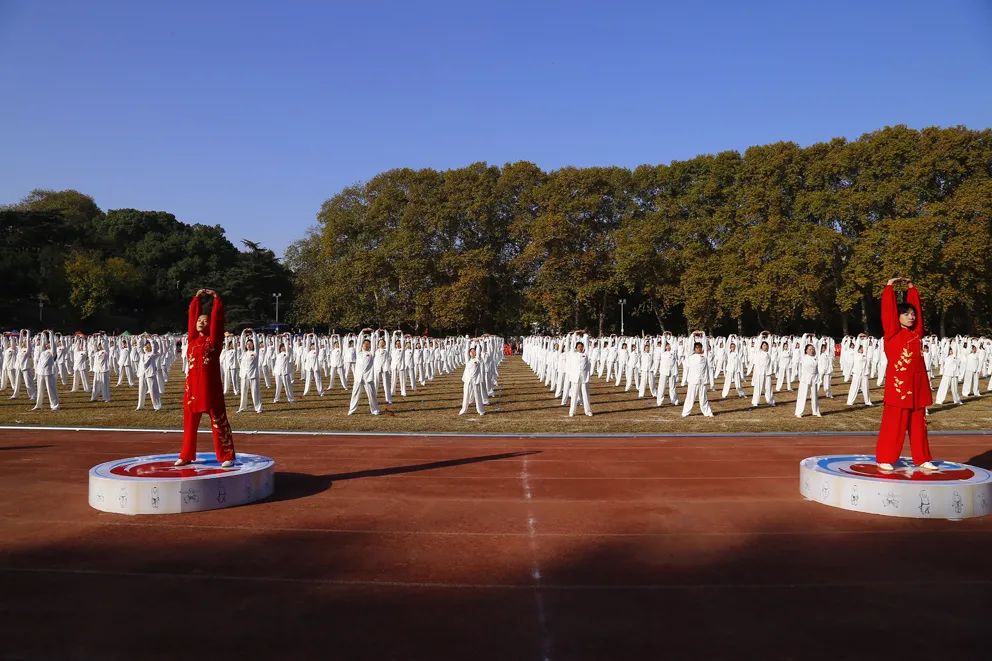
The essential principles for practicing health qigong can be summarized in twenty-four characters: relaxation, tranquility, naturalness, mind and breath in harmony, movement and stillness combined, practice and nourishment integrated, spirit at ease, and gradual progress.
1. Relaxation, Tranquility, Naturalness
Relaxation, tranquility, and naturalness are the fundamental principles of qigong practice. To master the essentials of practice, one must first focus on relaxation, tranquility, and naturalness. Without understanding or mastering these concepts, one cannot meet the requirements of practice. Therefore, grasping relaxation, tranquility, and naturalness is key to learning and practicing health qigong effectively.
Relaxation refers to the release of both mental and physical tension. Mental relaxation primarily involves alleviating psychological and physiological stress. Physical relaxation refers to the loosening of joints, muscles, and internal organs, commonly referred to as relaxation. In practice, relaxation requires the entire body to be in a state of looseness, comfort, and ease, but more importantly, it requires the relaxation of the mind, consciousness, and emotions. Throughout the practice, relaxation permeates all aspects, including posture, breathing, and intention. Tranquility means quietness; first, the thoughts and emotions must be calm, that is, a peaceful heart and serene emotions. Tranquility has both external and internal aspects. External tranquility refers to a quiet environment, while internal tranquility refers to the calmness of thoughts, intentions, and emotions. Internal tranquility is the most important during practice. By maintaining a relaxed and pleasant mental state, one can eliminate distractions and enter a state of relaxation and tranquility. Naturalness means that the body, breath, and intention should all remain relaxed and natural. The relaxation and tranquility during practice occur under the premise of naturalness. When the posture, breathing, and mental adjustments align with naturalness, the entire body will inevitably achieve a state of relaxation and tranquility, with both aspects complementing each other.
2. Mind and Breath in Harmony
In the principle of mind and breath in harmony, ‘mind’ refers to psychological regulation, while ‘breath’ refers to the breath of qi. Health qigong primarily involves the practice of mind and breath, with the mind being the guiding force. Practicing the mind aims to eliminate distractions and enter a state of relaxation and tranquility through regulated psychological adjustments, achieving harmony between mind and breath. Practicing breath primarily refers to training the breath of qi. Initially, practice generally begins with breath training, gradually transitioning from natural breathing to slow, even, fine, deep, and prolonged abdominal breathing, achieving a connection between heart and breath. Mind and breath practice occurs under the premise of relaxation, tranquility, and naturalness; breath practice cannot be separated from the guidance of the mind, and mind practice must have breath accompanying it. The two are interdependent and mutually restrictive, and neither can be neglected. The key to applying mind and breath in harmony is to grasp the right balance; one should not overly emphasize leading with the mind nor should one overly emphasize following the breath. Gradual practice is essential to develop this balance.
3. Movement and Stillness Combined
Learning and practicing health qigong also requires mastering the combination of movement and stillness. During the practice of health qigong, it is beneficial to organically combine movement and stillness to facilitate the smooth flow of meridians, harmonize qi and blood, and balance yin and yang, which significantly improves and enhances the practitioner’s health and has notable rehabilitative effects. Historical experiences and clinical practices of health preservation have proven that practicing only movement without stillness leads to excessive consumption, which is detrimental to storing and refining true qi; conversely, practicing only stillness without movement results in a lack of exercise for the muscles and bones, hindering the smooth flow of meridians and the harmonization of qi and blood, ultimately affecting the quality of practice and recovery of physical strength. Combining both forms of exercise enhances their benefits. Of course, one should choose whether to focus on stillness or movement based on individual physical conditions, requiring specific analysis and dialectical selection.
4. Practice and Nourishment Integrated
Practicing qigong must also integrate practice and nourishment, which should permeate the entire process of practice. People generally only recognize that practicing qigong is merely about exercise, unaware that in addition to practice, there is also nourishment, or what is called nourishing practice. ‘Practice’ refers to the organic combination of physical movement, breath training, and psychological regulation; ‘nourishment’ refers to the relaxed and comfortable state of the body that emerges from practicing health qigong, characterized by gentle breathing and a soft, tranquil mind. In practicing qigong, one must organically combine ‘practice’ and ‘nourishment,’ achieving ‘nourishment within practice’ and ‘practice within nourishment.’ It is essential to arrange practice time and quantity appropriately, control intensity, and pay attention to the rhythm of practice. Some believe that integrating practice and nourishment means balancing practice with reasonable rest, implying that outside of practice, one should have reasonable rest (regular lifestyle, optimistic emotions, balanced diet, appropriate physical activity, and adequate rest). However, this is a misunderstanding; this view differs from what we mean by ‘integrating practice and nourishment.’ The correct understanding should emphasize ‘integrating practice and nourishment’ throughout the entire practice process, rather than referring to rest outside of practice. Grasping this point is crucial. Naturally, maintaining a balanced diet and regular lifestyle will help improve the effectiveness of practice and enhance physical and mental health.
5. Spirit at Ease
Practicing qigong must maintain a spirit at ease, meaning that during practice (including before and after), one should maintain a pleasant mindset and engage in health qigong exercises in a relaxed, joyful, and cheerful mental state. This is also a crucial aspect determining whether practitioners can achieve results. In labor, life, and work, individuals may encounter disturbances from the ‘seven emotions’ (joy, anger, worry, thought, sadness, fear, and shock) and the ‘six desires’ (sight, wealth, fame, profit, gain, and loss), as well as various tensions, troubles, sadness, and anger. How do we handle and address these? The famous physician and health expert from the Tang Dynasty, Sun Simiao, believed: “The way does not lie in worry, but in being able to disregard thoughts of clothing and food, sounds and colors, gains and losses, victories and defeats, twists and turns, and gains and losses, while also engaging in guiding and circulating qi continuously, one can live long. However, one cannot be without thoughts; the key is how to handle and control them, gradually eliminating them.” His last sentence is particularly insightful! It is impossible for a person to be without distracting thoughts; the key lies in how to manage and control them, gradually eliminating them and ultimately removing the interference of negative thoughts.
Scientific research has proven that human consciousness and thought activities significantly impact health and longevity. Positive (i.e., relaxed, cheerful, and optimistic) psychological and conscious thought activities can promote the body towards health and longevity, while negative (i.e., anger, tension, worry, sadness, and other unpleasant emotions) thought activities can disrupt brain function, leading to internal organ dysfunction and various diseases. Thus, maintaining a positive mindset and optimistic emotions enhances the body’s immune function and strengthens anti-aging effects.
6. Gradual Progress
Practicing qigong must also follow a principle of gradual progress, which is an important principle for mastering and practicing qigong well. Beginners often tend to exhibit two tendencies: one is to be overly eager for success, pursuing effects and results with high-intensity practice, leading to excessive practice that ultimately fails to achieve the desired results and may even cause deviations. The second tendency is to be lax and indulgent. Those with this latter tendency often lack a correct practice goal, confidence, determination, and perseverance, resulting in a ‘three days of fishing, two days of drying the net’ approach. This lax and careless practice will never yield good results. It is essential to avoid and overcome these two negative tendencies, fully exerting subjective initiative, and gradually progressing step by step according to the principles and methods of practice. Specifically, during qigong training, one should practice diligently according to the requirements of the method and their physical condition, persistently striving for continuous improvement in skill and enhancement of physical condition.

Scan the QR code to follow us





The official Douyin account of the China Health Qigong Association (please open Douyin to scan)


